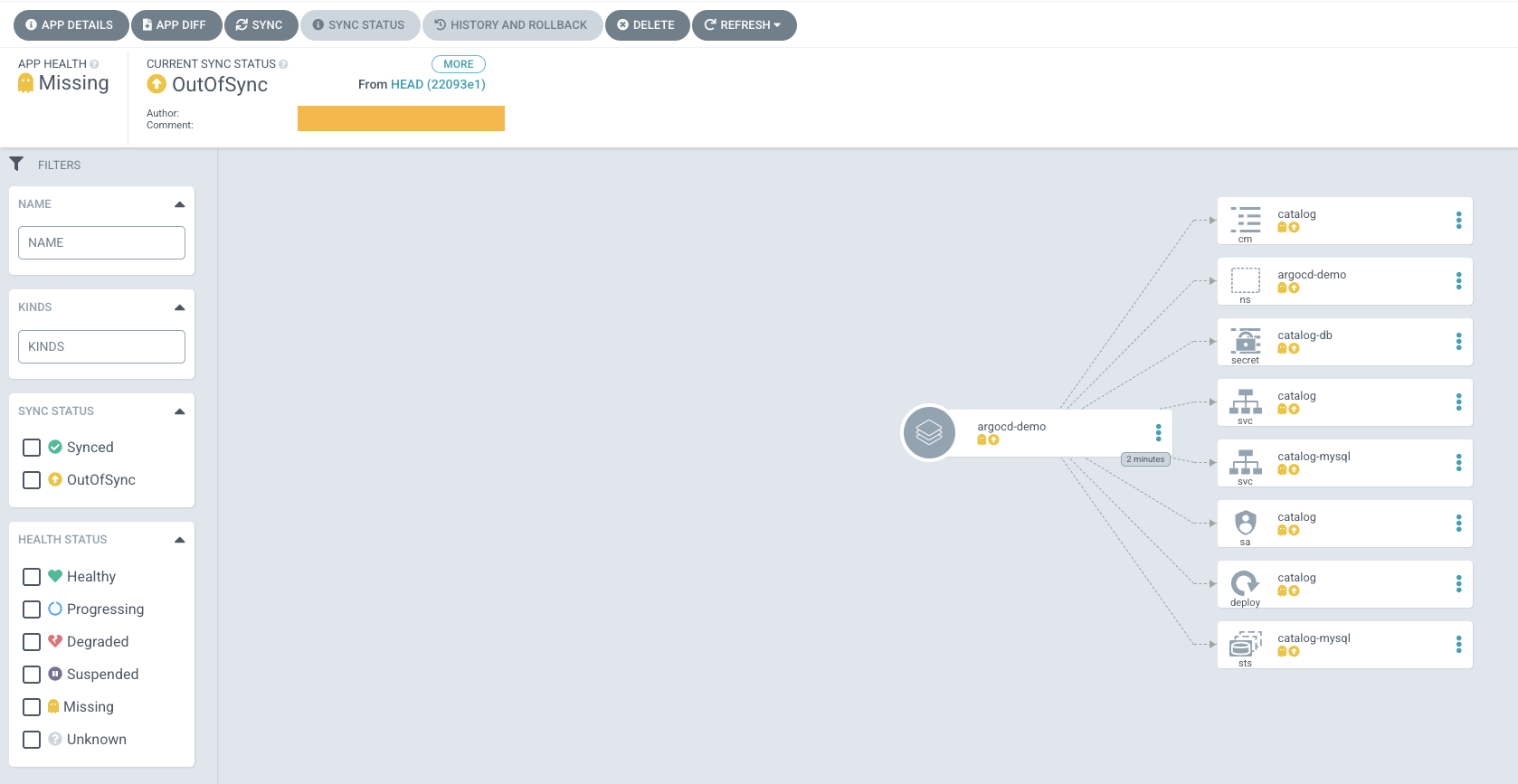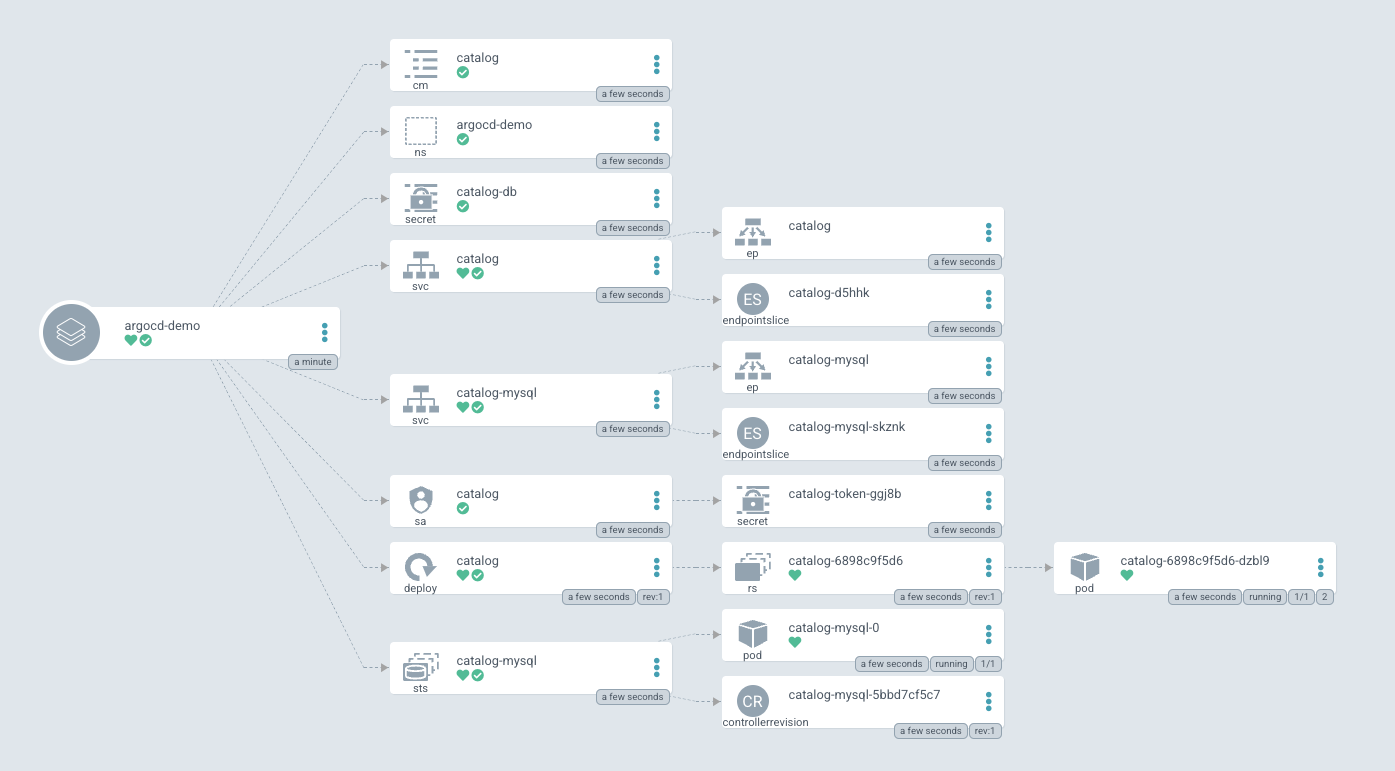Deploying an application
Argo CD applies the GitOps methodology to Kubernetes. It uses Git as a source of truth for your cluster's desired state. You can use Argo CD to deploy applications, monitor their health, and sync them with the desired state. Kubernetes manifests can be specified in several ways:
- Kustomize applications
- Helm charts
- Jsonnet files
- Plain directories of Kubernetes YAML files
In this lab exercise, we'll deploy a simple applications specified in Kustomize using Argo CD. We'll use the catalog application from our EKS Workshop repository.
Create an Argo CD Application
Argo CD application is a CRD Kubernetes resource object representing a deployed application instance in an environment. It defines key information about the application, such as the application name, the Git repository, and the path to the Kubernetes manifests. The application resource also defines the desired state of the application, such as the target revision, the sync policy, and the health check policy.
Let's create a namespace for our application:
Create an Argo CD application:
application 'argocd-demo' created
Verify that the application has been created:
NAME CLUSTER NAMESPACE PROJECT STATUS HEALTH SYNCPOLICY CONDITIONS REPO PATH TARGET
argocd/argocd-demo https://kubernetes.default.svc argocd-demo default OutOfSync Healthy <none> <none> https://github.com/aws-samples/eks-workshop-v2.git environment/workspace/modules/automation/gitops/argocd
Alternatively, you can also intereact with Argo CD objects in the cluster using the kubectl command:
NAME SYNC STATUS HEALTH STATUS
argocd-demo OutOfSync Missing
Open the Argo CD UI and navigate to the argocd-demo application. You should see the following screen:

Notice that the application is currently in OutOfSync state. This means that the application is not deployed and in sync with the desired state.
Let's check if there are any pods running in the argocd-demo namespace:
No resources found in argocd-demo namespace.
Now, we're going to sync the application. This will deploy the application to the cluster and bring it to the desired state.
Click on the SYNC button in the UI of the app.

Or, you can also use the argocd CLI:
After a short period of time, the application should be in Synced state and the resources should be deployed, the UI should look like this:

Let's check if resources have been deployed:
NAME READY STATUS RESTARTS AGE
pod/catalog-6898c9f5d6-dzbl9 1/1 Running 2 (4m37s ago) 4m40s
pod/catalog-mysql-0 1/1 Running 0 4m40s
NAME TYPE CLUSTER-IP EXTERNAL-IP PORT(S) AGE
service/catalog ClusterIP 172.20.127.102 <none> 80/TCP 4m40s
service/catalog-mysql ClusterIP 172.20.197.206 <none> 3306/TCP 4m40s
NAME READY UP-TO-DATE AVAILABLE AGE
deployment.apps/catalog 1/1 1 1 4m41s
NAME DESIRED CURRENT READY AGE
replicaset.apps/catalog-6898c9f5d6 1 1 1 4m41s
NAME READY AGE
statefulset.apps/catalog-mysql 1/1 4m41s
You've succefully deployed an application using Argo CD with the GitOps model.